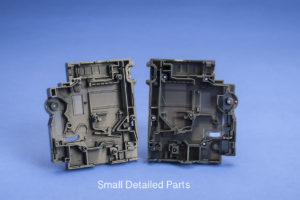Democratization of 3D printing and disruptive innovation are among some of the slightly vague, but recognizable, terms that those who follow the 3D printing / additive manufacturing (AM) industry have probably encountered. So, what is the practical translation of these concepts to individuals and companies incorporating 3D printing in their business planning?
Democratization of technology generally refers to the process by which access to technology rapidly and readily becomes accessible to more people (e.g., the internet). At the height of 3D printing hype in 2014, opportunities for selling low-cost FFF 3D printers to individual consumers was presented under this banner. The key learning that shortly followed was that a product/technology “push” without an appropriate market “pull” (benefit to the targeted market) is a challenging (and costly) proposition.
Today, 3D printing/AM is more realistically viewed as encompassing more than just the printer. Some of the key drivers for the spread of this technology include:
- Continuing advancements in scanning technology facilitating easier capture of CAD data from existing objects
- The ever-growing number of 3D CAD users coupled with more cost-effective and capable systems
- Easy access to a diverse technology service provider base for production of commercial or consumer parts and prototypes
- Expanded application knowledge
- Familiarity with 3D printing concepts in corporate environments and increasing integration of 3D printing in the educational curriculum
- Increasing diversity of equipment types and material performance capabilities.
New market entrants also have introduced more cost-effective routes to both metal and polymer systems for both prototype and production use. UnionTech recently announced a series of industrial strength SL equipment, PILOT 250 and PILOT 450, to serve the commercial market with pricing starting under $100,000.
UnionTech’s commercial printers with open sourcing of material options provide access to the same materials used in production equipment for cost effective access to a wide range of applications.
Another factor that is emerging with recent market entrants is the embrace of open sourced materials. A transition to widely available open sourced 3D printing systems offers wider access to material technology as well the potential for competitive material pricing.

Understanding what factors will continue to drive the spread of 3D printing/AM in particular market segments may well be a future differentiator for the successful integration of these technologies as well as the cost competitiveness of specific businesses.
The terms “market disruptor” or “disruptive innovation” often show up in discussions of new 3D printing technologies or 3D printing in general. The term disruptive innovation was first popularized by Harvard professor Clayton Christensen. The basic concept of disruptive innovation is that companies continue to invest in the development of their established products and at some point exceed the basic requirements of many of their customers. Disruptors typically introduce products that meet the market needs with a combination of lower cost and/or more convenience. Disruption typically results in a change in the business system. For the user of 3D printing, recent new market and product entrants offer opportunities for enhanced performance and/or lower cost in both polymer and metal systems. UnionTech’s commercial PILOT line and RSPro production series of stereolithography equipment is an example of a recent market entrant introducing products into an established market that produces high quality, accurate parts at significantly lower market prices. This is achieved by adding only the features needed by the end user.
Also, open sourcing both avoids investing in costly features that block third party products and offers the user a choice of world-class materials and software from established market sources. Not all innovations are disruptors, regardless of whether they are evolutionary or revolutionary developments. Many 3D printing/AM technologies may disrupt established 3D printing processes, but may simply be enablers to established businesses.
There is also a point where the idea of democratization of technology and disruptive innovation converge. Democratization of logistics and manufacturing are already seeing the influence of 3D printing technologies that will allow the replacement of centralized production and long logistical supply chains. 3D printing / additive manufacturing will continue to grow as enablers of manufacturing to increase speed/responsiveness to market as well as contributing to improved cost effectiveness. True disruption as well as evolutionary change within the 3D printing industry as well as the markets they serve will continue. April 2018 offers excellent opportunities to explore the options and ideas offered by those that serve this market: the Additive Manufacturers User Group (AMUG, for those currently using 3D printing/AM technology) April 9th-13th and the RAPID + TCT Conference April 23rd-26th.
Be prepared to ask these basic questions:
- “How does this system add to the convenience or cost efficiency of my operation?”
- “What is the range of capabilities and applications I can achieve with this technology?”
- “How can this technology be best utilized in my business to provide equip me to face future business challenges?”
Perhaps your department or company may just offer the next business disruption and contribute to the “democratization” of 3D printing.
To learn more about Union Tech Inc.: https://uniontech3d.com/
Discuss stereolithography and other 3D printing topics at 3DPrintBoard.com or share your thoughts in the Facebook comments below.
[Images: Union Tech]
Jim Reitz is the General Manager of Union Tech, Inc.
